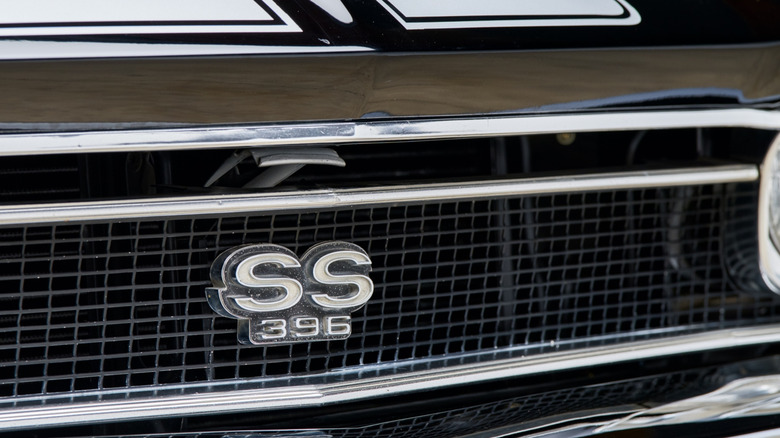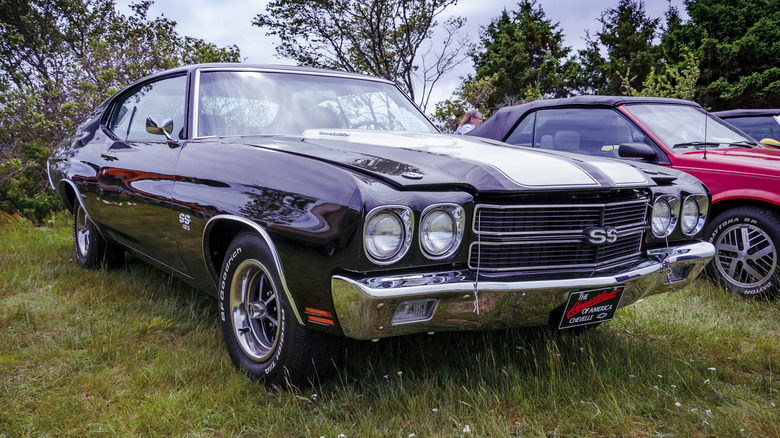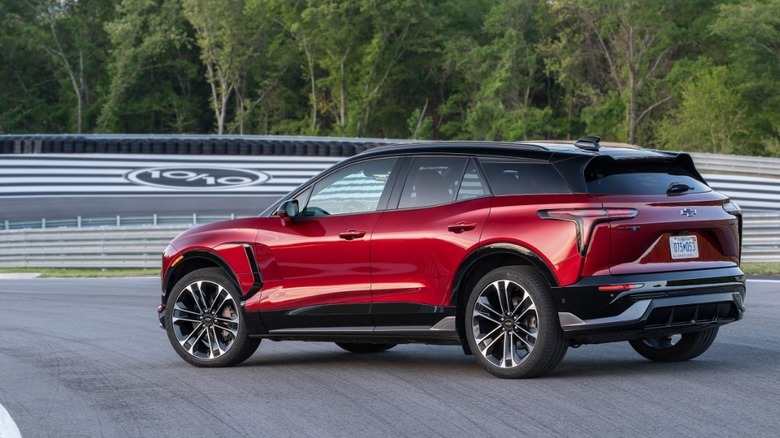Chevy SS: What Do The Letters Stand For & Which Cars Have The Badge?
When it comes to iconic automotive performance monograms, few have been around longer or have been placed on such a wide variety of vehicles as Chevrolet's "SS" badge. Standing for Super Sport, Chevy has used the SS name on everything from experimental race cars to legendary big block pony cars, pickup trucks, and turbocharged sport compacts. For a few years, there was even an entire model simply called the Chevy SS. Most recently, the SS branding is being used on high-horsepower, all-electric SUVs like the Chevy Blazer EV SS.
Though the SS designation hasn't always meant that there's fire-breathing performance under the hood, and some SS packages have had more performance hardware than others, these two letters have always demanded respect on the street and have been part of Chevrolet's performance history for nearly 70 years now.
Chevy now estimates that it has sold over 4 million SS-badged vehicles across its various model lines since 1961. Let's take a look back at how the legend of the SS was born and how the branding has evolved from the 1960s muscle car era into the '80s and '90s and now into today's era of electrification.
From the race track to the street
Chevrolet first used the Super Sport (SS) designation in 1957 on a purpose-built Corvette designed for sports car racing. Just two examples were built, a test car and a race car. The latter competed in, but did not finish, the 1957 12 Hours of Sebring race. In early 2025, the 1957 Corvette SS race car was put up for auction, where it became the most expensive Chevrolet ever sold.
Interestingly, though, while the SS monogram was first used on a Corvette race machine, it would never be used on the Corvette again. The Corvette would instead develop its own performance designations (Z06, ZR1, GS, etc.) while Chevy used SS on just about everything else. The first production car to get an SS variant was the 1961 Impala, followed shortly after by the Chevy II Nova, the Chevelle, and then the brand new Camaro in 1967.
The late '60s and early '70s were the peak of the original Super Sport era. This was when big block 396, 427, and 454-powered Camaros, Chevelles, Impalas, and even El Caminos were out on the streets and drag strips, representing Chevrolet in the muscle car horsepower wars. By the mid-1970s, horsepower numbers had shrunk significantly, with the SS package going on hiatus in 1976.
Into the modern era
In the '80s and early '90s, as high-performance vehicles began to awaken from their emissions-choked slumber, the SS badge returned. First on the Monte Carlo SS, then on the Silverado SS 454 pickup, the mid-'90s Impala SS sedan, and also on top-end versions of the Camaro. By the mid-2000s, the SS badge could be found on everything from front-drive Malibus and Monte Carlos, to the Silverado pickup, the tuner-influenced Cobalt SS, and retro-styled HHR SS and SSR, to the Trailblazer SS SUV.
In 2014, when Chevy brought over a version of the Holden Commodore from Australia, the car was simply called Chevy SS, and with its low production numbers, the SS soon became a cult favorite. The Camaro, which was discontinued in 2024, would be the final gasoline-powered Chevy to wear the SS badge (for the time being at least). At the moment, if you want a new Chevy with an SS badge, you'll have to go electric, in the form of the 615-horsepower Blazer EV SS SUV.
Is the electric Blazer a true SS? There's no doubt about its acceleration, at least. Its 3.4-second 0-60 time makes it, by Chevy's claim, the quickest vehicle ever to wear the SS badge. Time will tell whether this or other possible SS-badged performance EVs can win over car enthusiasts the way their predecessors have been doing for decades.


